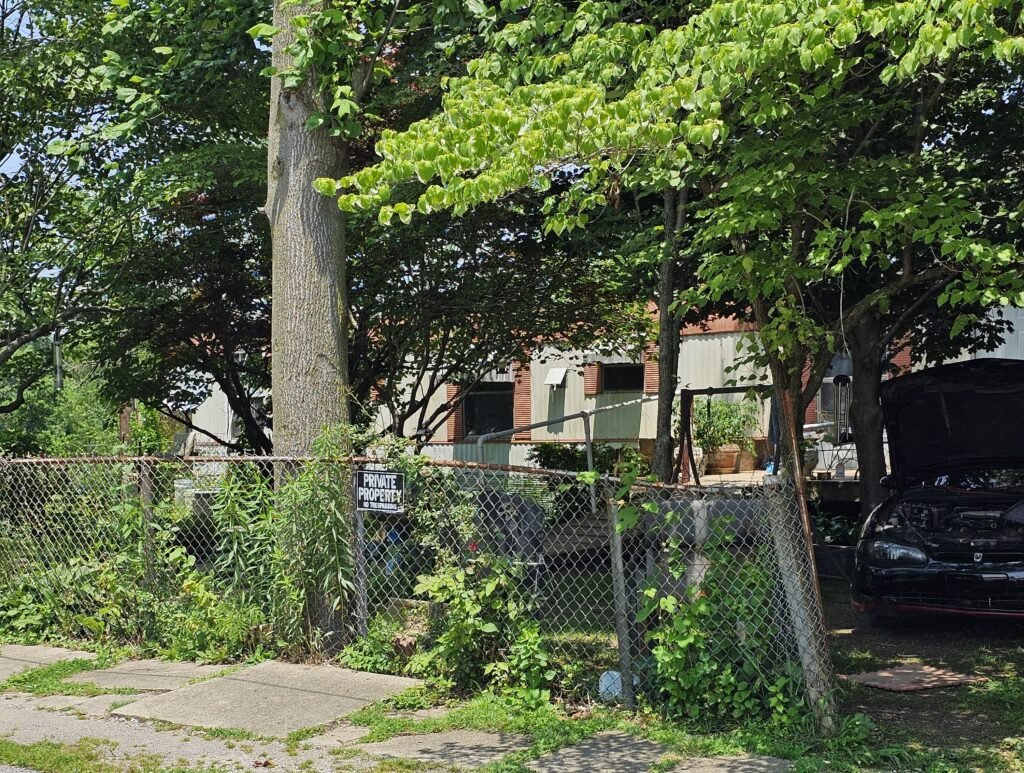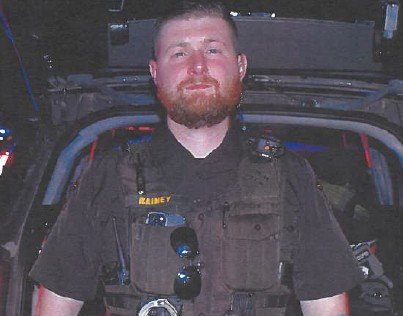Investigators who probed a Henderson County Sheriff’s Office deputy shooting that left a Corydon man dead determined the deputy was justified in his actions.
“After review, it is abundantly clear that Deputy Edward Rainey of the Henderson County Sheriff’s Office was justified in discharging his firearm which resulted in the death of Charles Powell, Jr., who was armed with an eighteen (18) inch ‘machete,’” wrote Mike Van Meter, the commonwealth’s attorney of the 6th Judicial Circuit who looked at the investigation that was conducted by Kentucky State Police Detective Shaun Schroader.
Van Meter also wrote in a letter dated Aug. 13 that was included in the files received by the Hendersonian that he would not be presenting the case to a Henderson County grand jury. The Hendersonian received the KSP investigation by filing an open records request with the state headquarters in Frankfort.
Henderson County Sheriff Chip Stauffer, who was not involved in the official investigation, said that he watched Rainey’s body camera footage which showed that Powell was not following the deputy’s instructions and that “de-escalation…was probably not going to happen.”
“There’s not much he (Rainey) could have done to have prevented what happened,” Stauffer said.
The incident occurred on June 9 at Powell’s home, 137 Eighth St. in Corydon.

According to Schroader’s investigation, HCSO responded to the home three times on the day that Powell was shot. Additionally, Powell was characterized by those there that he was unstable or in a rage throughout the day.
The first call came at 11:41 a.m. from a caregiver to Powell’s mother, Linda Hoggard, who also lived at the residence. The caregiver said that Powell was walking around the house with a knife on his hip and a sword in his hand, according to the investigation’s summary of events. The caregiver also said Powell had knocked everything off the coffee table.
The second call came from Powell’s brother, T.J. Hoggard, at 5:44 p.m. When Rainey arrived shortly after, T.J. Hoggard said that Powell had pushed him out of the camper—in the front yard of the home is a camper—onto the ground and then had gone to get beer up the road. Powell didn’t return, and Rainey left, according to the order of events.
A third call came at 7:23 p.m. In this one, T.J. Hoggard told 911-Dispatch that Powell was threatening him with a machete and also said he was going to kill him. After arriving at the home, Rainey spoke with T.J. Hoggard, who told the deputy that Powell had gone inside the home. Rainey then called to Powell, asking him to come out. Powell did not.
Shortly after, Rainey walked down a ramp toward his cruiser, when he turned and saw Powell standing in the doorway looking at him with a machete in his hand. Rainey told him, “Drop the machete Charlie.” Powell raised the machete over his head and began to move toward Rainey, according to the investigation.
Rainey again told Powell to put the machete down, to which Powell responded, “You better shoot me.” The report said that Powell continued to ignore verbal commands from Rainey, who then drew his Taser and performed a warning arc. Powell continued down the ramp and began to run with the machete over his head moving toward the deputy.
Rainey backpedaled into the road while continuing his commands. Powell stopped at the sidewalk gate, still with the machete raised over his head. Again, Rainey told him to put it down, the report said.
At this time, Rainey took his pistol in his right hand and appeared to deploy both Taser cartridges on Powell, but neither were effective in incapacitating him, said the report. In the body came footage, it appeared that Powell swings the machete downward in a slashing motion, according to the report. Then Powell turned and ran back up toward the house, still with the machete in hand. Rainey again commanded Powell to drop the machete.
At this point, “Deputy Rainey fires one-time, striking Powell and causing him to fall to the ground near the top of the porch ramp,” according to the report.
In an interview conducted by Schroader, Rainey said he was worried that Powell would kill his mother who was still inside the home or cause harm to deputies who may show up later as backup.
“At that point, my main concern is I can’t let him get back into that residence and either kill his mother or potentially produce a firearm or harm deputies when they go in to try and remove him,” Rainey said in the interview.
All interviewed in the report—the caregiver, Linda Hoggard and T.J. Hoggard—said that Powell suffered from mental health problems. Throughout the day of his death, Powell—according to both Linda Hoggard and the caregiver—said, “I’m going to die today.” According to T.J. Hoggard, Powell threatened to kill him on that day.
At the end of his interview, T.J. Hoggard “goes back and forth and is not certain” if Rainey was right or wrong in his actions. “The only reason id (sic) say the Deputy was probably in the right is, if somebody’s got a machete and they’re threatening their family something needs to be done you know what I mean?” the report quoted him as saying.
Kentucky Revised Statutes say that an officer is justified in using deadly physical force when the officer believes that it is necessary to protect himself or a third person against imminent death or serious physical injury, among other justifiable reasons.
Additionally, toxicology reports of both Powell’s blood and urine specimen test positive for amphetamines and methamphetamines, according to the KSP report.
Stauffer said Rainey was on mandatory leave for three weeks after the incident. He is now back on regular duty, the sheriff said.
Rainey had completed de-escalation training but had not completed crisis intervention team training before the incident. The sheriff said that crisis intervention is the first in-service that deputies take on after joining the office, but it’s not always quickly lined up because deputies must train alongside mental health counselors and it’s not easy to coordinate schedules. Rainey began work at HCSO in January 2024.
Additionally, Stauffer said that he most often seeks outside assistance from outside agencies to conduct investigations of officer-involved fatal shootings. When Stauffer was Henderson Police Department chief, KSP conducted the investigation of an officer-involved shooting. Currently, however, HPD, not KSP, is investigating another HCSO deputy-involved shooting that occurred in July because of the circumstances of that incident, Stauffer said.
Near the end of the interview, Schroader asked Rainey if there was anything he thought he or any other law force could have done differently to change the outcome of the situation.
“No, I don’t think there’s anything that I could’ve done differently…it’s just one of those situations, unfortunately,” Rainey responded. “It’s, I didn’t want the result, but, he did.”
“I mean, I just hope that his family can find peace through all this,” Rainey said at the end of the interview.






















